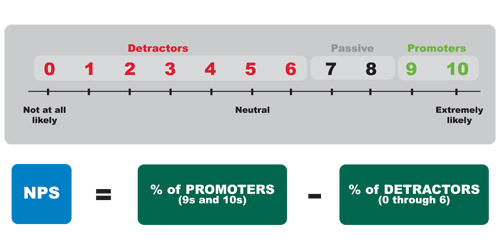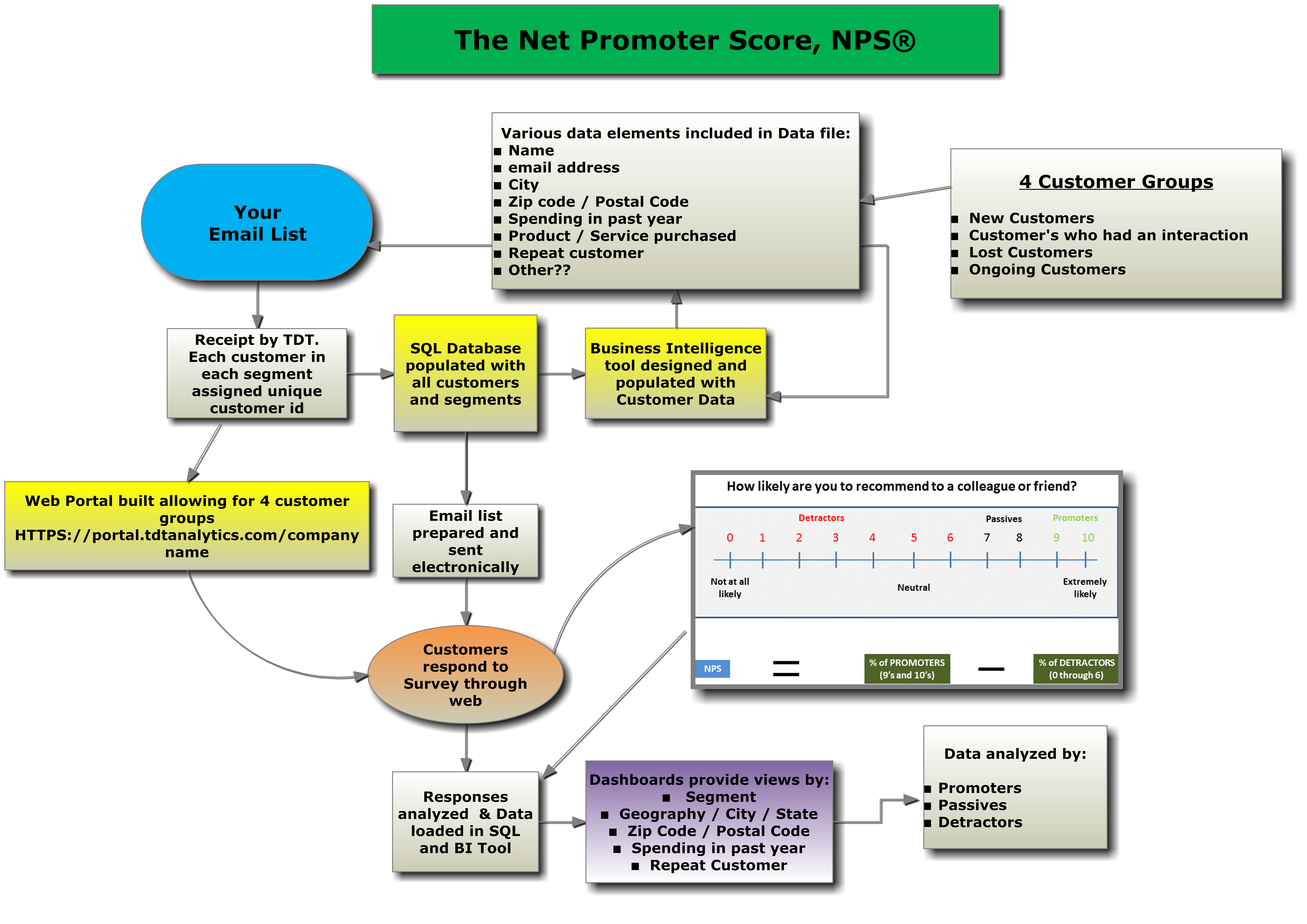Net Promoter Score
Understanding how your customers perceive you 
NPS is based on the fundamental premise that every company’s customers can be divided into three distinct categories:
Promoters, Passives and Detractors.
By asking one simple question – How likely is it that you would recommend (Company XYZ) to a friend or business colleague? Customers respond on a 0 – 10 point rating scale and are categorized as follows:

Promoters: (Score 9 – 10 ) are loyal enthusiasts who will keep buying and refer others fueling growth for your company.
Passives: (Score 7 – 8 ) are satisfied customers but unenthusiastic and are vulnerable to competitive offerings.
Detractors: (Score 0 – 6 ) are unhappy customers who can damage your brand and impede your growth through negative word of mouth communication.
To calculate your actual Net Promoter Score, take the percentage of customers who are Promoters and substract the percentage who are Detractors.
Simply measuring your Net Promoter Score does not lead to success.
Companies need to follow an associated discipline to actually drive improvements in customer loyalty and enable profitable growth.
NPS should be coupled with the Customer Lifetime Value (CLV) of each customer. By marrying these two elements one is then in a position to develop actionable strategies to address each customer segment and then to measure the impact of these strategies upon your NPS and CLV scores.
Net Promoter Score can be used to motivate an organization to become more focused on improving products and services for customers.
Net Promoter Score is a customer loyalty metric developed by (and a registered trademark of) Fred Reichheld, Bain & Company, and Satmetrix.
It was introduced by Reichheld in his 2003 Harvard Business Review article “The One Number You Need to Grow”
Net Promoter Score
The process we follow to incorporate the results of your NPS data into your Operations and metrics:


